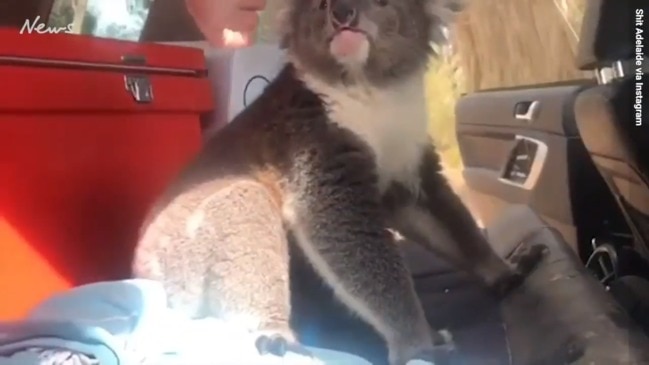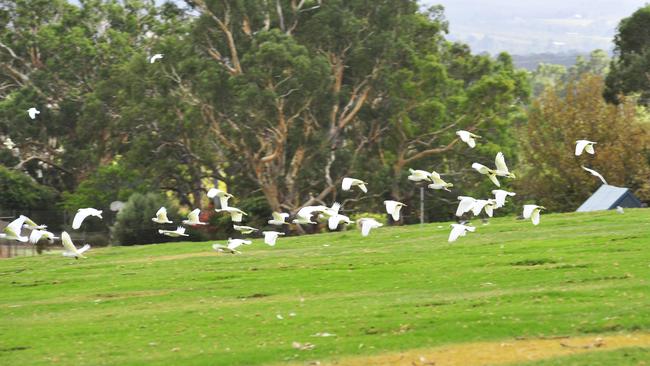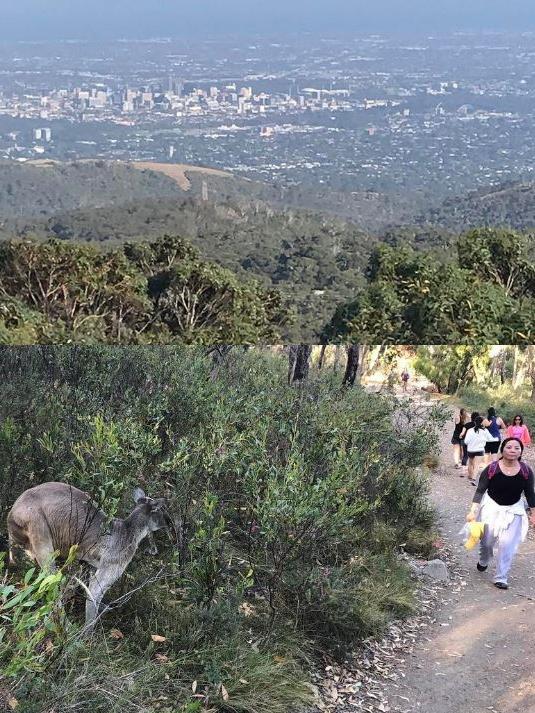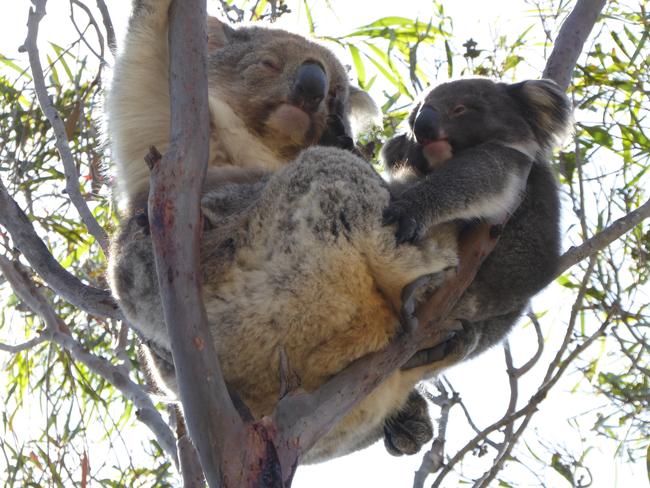Koalas and kangaroos are overabundant in SA and should be culled, parliament inquiry says
It might seem an “abhorrent” idea, but overpopulated koalas and kangaroos starving themselves and other animals to death need to be culled in SA, a parliament inquiry says.

- Corellas in huge numbers leave trail of destruction across SA
- Doco exposes the brutality of Australia’s ongoing kangaroo cull
- And another doco shows effects of overpopulation and starvation
- Why KI’s koalas may hold the key to their survival
Koalas on Kangaroo Island should be killed, half the kangaroos in the Mount Lofty Ranges eliminated and little corellas corralled away from where they are they causing damage, a parliamentary inquiry has heard.
Admitting significant public discomfort exists over culling, the inquiry urged the State Government not be squeamish or risk losing the state’s biodiversity.
“Unless we act to manage the problem by culling abundant animals, there will not be a lot of other biodiversity in the state,” the Natural Resources Committee said it had been warned in an inquiry into abundant and pest species.
The committee recommended Environment Minister David Speirs declare as overabundant western grey kangaroos, little corellas, long-nosed fur seals and koalas, triggering his power to order control measures including destroying the animals.
It came despite the committee reporting “a genuine reluctance to communicate with the public about culling, as some community stakeholders find the concept ... an abhorrent approach”.
The committee — with members from both major parties — found there was no holistic, statewide approach to co-ordinating different government and community-level organisations involved.
The inquiry report tabled in State Parliament follows evidence and more than 40 submissions to the committee.
The Kangaroo Island Natural Resources Management Board said the State Government had spent millions of dollars over 22 years trying to control koalas while following a policy of not culling the animals.
However, the board was “acutely concerned that without lethal management the numbers of koalas on the island will continue to increase to the point where irreparable damage occurs and the board believes that, on balance, the positives of culling koalas outweighs the negatives”.

Either culling, or a big injection of funds to ramp up expensive options such as sterilisation, was needed to avoid “the outcomes that nobody wants: damaged or dead trees (with impacts on all dependent species as well as on tourism) and starving koalas”.
University of Adelaide Associate Professor David Paton painted a similar grim picture in the Mount Lofty Ranges, where he said the kangaroo population was double a sustainable level.
Their voracious appetite was destroying habitat for other species.
“His observations of damage to biodiversity caused by overabundant kangaroo populations have included … reptiles, invertebrates and birds,” the committee said.
“He listed bird species of concern: red-browed firetail, diamond firetail, and beautiful firetail finches.”
The Murray Darling Basin Natural Resources Management Board said grazing from kangaroos was the main threat within many conservation parks in that region.
The District Council of Grant called for the South-East to be added to the zones where kangaroos could be shot and harvested by commercial operators.
The swelling population of kangaroos were a problem for landowners, tourism ventures and road users.
“Anecdotal evidence from local crash repairers indicates that 30-40 per cent of vehicle damage repair claims are as a result of collisions with animals (primarily kangaroos),” the council said.

Permits can be obtained in the South-East where kangaroos are problematic but not for commercial harvesting.
Port MacDonnell Golf Course told the council it was overrun with about 250 kangaroos, causing a hazard to golfers and the public.
“Whilst we understand that permits may be obtained to help with the problem the issue is that a decaying corpse cannot be left in public view and the added smell is not a problem we would be comfortable with having,” the club said.
Professor Paton said the policy of “shoot and let lie” made no sense and gave foxes and feral cats ready access to a food supply.
The RSPCA also was critical of the policy for non-commercial shooting.
“(The RSPCA) contends that the incentive to produce a head trophy may result in a chest shot being used, whereas a more humane outcome would be achieved with a head shot,” the committee said.
“Recreational shooters are not required to demonstrate weapon competency or knowledge of animal welfare standards, which is likely to result in lower animal welfare standards being achieved.”

The committee heard financial costs of responding to overabundant and pest species was difficult to quantify and differed widely across species and seasonal conditions.
One report for the NSW Government estimated nearly $800 million was lost each year Australia-wide through effects on agriculture and government spending to control rabbits, goats, pigs, carp and introduce birds.
The Apple and Pear Growers’ Association and Cherry Growers’ Association said up to 50 per cent of their crops can be lost in a bad year if insufficient controls were in place against grey-headed flying foxes, kangaroos, birds, deer, and hares.
The cost of dealing with little corellas was “costly and unabating” with many district councils spending tens of thousands of dollars annually without stopping the problem.
Often councils would merely scare birds away to another area — or only temporarily.
Options included creating refuges for little corellas to lure them away from areas where they were causing harm.

Alternative management techniques also needed to be explored for long-nose fur seals.
While culling was advocated by some experts, the Southern Fishermen’s Association thought new groups of seals would simply replace those killed.
Environment Minister David Speirs said he needed to study the detail of the committee’s report.
“Some species of native wildlife can cause negative economic, social and environmental impacts,” Mr Speirs said.
“Challenges include a growing interface between urban and natural environments, human modifications to the landscape, and activities that make areas more attractive to wildlife, and a changing climate.”
The Government was working on management plans which would be “effective, agile, practical and humane” and consider scientific evidence, economic and social impacts.

